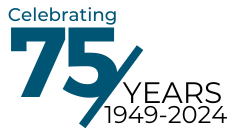The guitar is one of the most popular instruments in the world. Whether it’s an acoustic guitar or an electric guitar, almost everyone has seen someone play a guitar at some point in time.
Have you ever wanted to learn how to play the guitar? Use this guide to learn the ins and outs of playing this iconic instrument.
Find a Model That Suits You
Before you can learn how to play the guitar, you need to get your hands on one. Guitars can be easily found online, and if you look around a local pawn shop or music shop you might be able to locate one in good condition. You can also try asking friends or family members to see if they have one that you can use.
As mentioned above, there are many different variations on the guitar, including classical, electric, and acoustic. Try to find one that piques your interest, and stick with that one as you practice. If you aren’t sure where to start, the acoustic guitar is generally regarded as a good starting point.
Going Over the Guitar’s Parts
If you want to learn how to play a guitar, you need to understand the different parts that make one up. The top part of the guitar is the headstock, and it holds the tuners used to adjust the sound the instrument produces. The long strand of wood that holds the strings is known as the neck.
Along the neck and below the strings are frets, the raised metal pieces that show where you can play specific notes with the strings. On the opposite end from the headstock is the bridge, the area where the strings are attached on the guitar’s body. Lastly, if you are using an acoustic guitar, the giant hole in the center is the sound hole, which is where the sounds come from when you play.
Holding the Guitar
In order to play the guitar properly, you need to learn how to hold it correctly. This is very important, because you need to be able to comfortably reach each part of the guitar as you play so you don’t strain your arms. You can hold the guitar while sitting or standing, but if you are just starting out it would be easiest to play while sitting down.
A common way to hold a guitar is to rest the middle part of it on your right leg while you are sitting down in a chair. Keep the guitar close to your body, and rest your right arm across the body of the instrument. Lastly, keep your back straight to avoid creating back strain while you play.
The Basics of Playing the Guitar
Now you’re ready to learn how to play the guitar. To play the strings you can either use a guitar pick, or you can strum with your fingers directly. If you choose to use a pick, hold it between your index finger and along the pad of your thumb when you play.
To strum on a specific fret of the guitar, press down on the string below the fret you want to actually play. For example, to play on the fourth fret, press down in the area between the third and fourth fret.
Be sure to adjust the sounds your guitar makes by twisting the tuners on the headstock of the guitar left or right. Test tuning combinations with each string to find the most ideal sounds.
Hitting the Chords
In order to turn your strums into music, you need to learn about playing chords, which are three notes played together to create a melody. There are several chords you can play, including C Major, A Major, D Major, and more. The key to playing these chords is to keep your hands in comfortable positions that allow you to easily play the correct strings.
For example, to play A Major, place your index, middle, and ring finger, on the second, third and fourth strings of the second fret. Go down the line and strum each string to play the chord. This is the easiest one to start with, so work on that for a bit and try other chords once you’ve gotten the hang of it.
Once you’ve mastered the basics, test your knowledge by playing a song you enjoy. Keep practicing, and before you know it, playing the guitar will become second nature to you.


